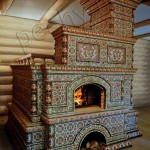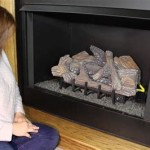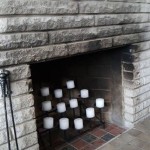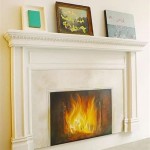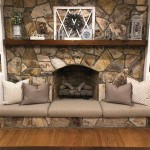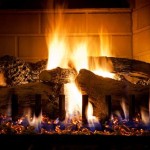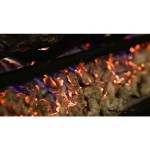What Is A Direct Vent Propane Fireplace?
A direct vent propane fireplace is a type of gas fireplace that utilizes a sealed combustion system connected directly to the exterior of a building. This system distinguishes it from other fireplace types such as vent-free or natural vent models. The direct vent design draws combustion air from outside and expels exhaust gases directly outdoors through a coaxial or concentric vent system. This sealed combustion process eliminates the need for a traditional chimney and provides a potentially safer and more efficient heating solution.
The primary fuel source for this type of fireplace is propane, a liquefied petroleum gas (LPG) commonly used for heating and cooking. Propane offers advantages such as portability and relatively high energy density. Direct vent systems are particularly well-suited for propane because propane combustion can produce byproducts that, if not properly vented, could pose health risks. The direct vent system effectively manages these byproducts, ensuring cleaner indoor air quality.
The installation of a direct vent propane fireplace typically involves connecting the fireplace unit to a propane supply line and installing the vent system through an exterior wall or roof. The vent system usually consists of two pipes contained within each other; the inner pipe expels exhaust, while the outer pipe draws in fresh air for combustion. This coaxial or concentric design allows for efficient heat exchange and helps maintain the integrity of the building envelope.
Key Advantages of Direct Vent Propane Fireplaces
Direct vent propane fireplaces offer several benefits compared to other types of fireplaces. These advantages stem primarily from their sealed combustion system and efficient propane utilization.
Enhanced Safety: The sealed combustion system is a critical safety feature. Because the fireplace draws air from outside and vents exhaust directly outdoors, there is a significantly reduced risk of carbon monoxide poisoning and other indoor air quality issues. The sealed system also prevents backdrafting, which can occur in traditional fireplaces when negative pressure within the home draws exhaust gases back into the living space. By completely isolating the combustion process, the direct vent design promotes a healthier and safer indoor environment. The risk of sparks or embers escaping into the room is also minimized, further contributing to the overall safety profile. Proper installation and regular maintenance are, however, still essential to ensure continued safe operation.
Improved Efficiency: Direct vent propane fireplaces are generally more efficient than traditional open-hearth fireplaces. Because they draw air from outside for combustion, they do not deplete warm air from the room. This helps to maintain a consistent temperature within the home and reduces the amount of heat lost up the chimney. Additionally, the sealed combustion system minimizes heat loss during the combustion process. The heat produced is directed into the room, rather than escaping through leaks or gaps in the fireplace structure. This increased efficiency translates to lower heating costs and potentially reduced energy consumption. The use of propane as fuel already offers a high energy output, which, coupled with the efficiency of the direct vent system, can provide a cost-effective heating solution.
Flexible Installation Options: The absence of a traditional chimney provides greater flexibility in terms of installation. Direct vent fireplaces can be installed in a variety of locations within a home, including rooms without existing chimneys or vent systems. The vent pipes can be run horizontally through an exterior wall or vertically through the roof, allowing for versatile placement options. This flexibility makes direct vent propane fireplaces suitable for new construction, renovations, and retrofits. The simpler installation process can also reduce installation costs compared to traditional fireplaces that require extensive masonry work. However, it is important to adhere to all local building codes and manufacturer's guidelines when installing a direct vent propane fireplace to ensure proper and safe operation.
Components of a Direct Vent Propane Fireplace System
Understanding the individual components of a direct vent propane fireplace system is essential for both proper operation and maintenance. The system consists of several key parts that work together to ensure safe and efficient heating.
Firebox and Burner Assembly: The firebox is the enclosure that houses the burner assembly. It is typically constructed of metal and designed to withstand high temperatures. The burner assembly is responsible for mixing propane with air and igniting the mixture to produce a flame. The design of the burner assembly significantly influences the appearance of the flame and the overall efficiency of the fireplace. Some models feature realistic log sets that enhance the aesthetic appeal, while others offer contemporary designs with glass media or stone arrangements. The burner assembly may also include safety features such as a flame sensor that automatically shuts off the gas supply if the flame is extinguished.
Vent System: The vent system is a critical component of the direct vent fireplace. It consists of two pipes: one for drawing in fresh air and another for expelling exhaust gases. These pipes are typically arranged in a coaxial or concentric configuration, meaning they are located within each other. The inner pipe carries exhaust gases to the exterior, while the outer pipe draws in fresh air for combustion. The vent system must be properly sealed to prevent leaks and ensure that exhaust gases are safely vented outdoors. The length and configuration of the vent system are determined by the manufacturer's specifications and must comply with local building codes. Using the correct type of vent pipe specified by the manufacturer is essential for safety and performance.
Gas Control Valve and Regulator: The gas control valve regulates the flow of propane to the burner assembly. It allows the user to adjust the flame height and heat output of the fireplace. The valve is typically controlled by a manual knob or a remote control. A regulator is also included in the system to maintain a consistent gas pressure, ensuring stable and reliable operation. The gas control valve and regulator are safety-critical components and must be properly maintained to prevent gas leaks or malfunctions. Regular inspections by a qualified technician are recommended to ensure the safe and efficient operation of these parts.
Installation and Maintenance Considerations
Proper installation and regular maintenance are crucial for ensuring the safe and efficient operation of a direct vent propane fireplace. Incorrect installation can lead to safety hazards, while neglecting maintenance can reduce the lifespan of the fireplace and compromise its performance.
Professional Installation: It is highly recommended to have a direct vent propane fireplace installed by a qualified and licensed professional. A professional installer will have the expertise and experience necessary to ensure that the fireplace is properly connected to the propane supply line and that the vent system is correctly installed. They will also be familiar with local building codes and regulations, ensuring that the installation meets all necessary requirements. Attempting to install a direct vent propane fireplace without proper training and experience can be dangerous and may void the manufacturer's warranty.
Regular Inspections: Regular inspections are essential for identifying potential problems and ensuring that the fireplace is operating safely and efficiently. It is recommended to have the fireplace inspected at least once a year by a qualified technician. During the inspection, the technician will check the vent system for obstructions, examine the burner assembly for damage or wear, and test the gas control valve and regulator for proper operation. They will also clean the fireplace and remove any debris that may have accumulated. Regular inspections can help prevent costly repairs and extend the lifespan of the fireplace.
Cleaning and Maintenance: In addition to professional inspections, homeowners can perform basic cleaning and maintenance tasks to keep their direct vent propane fireplace in good condition. This includes cleaning the glass front of the fireplace with a non-abrasive cleaner, removing dust and debris from the burner assembly, and checking the vent system for obstructions. It is also important to keep the area around the fireplace clear of flammable materials. Following the manufacturer's instructions for cleaning and maintenance will help ensure the safe and efficient operation of the fireplace.
In summary, a direct vent propane fireplace offers a safe, efficient, and versatile heating solution for homes. Its sealed combustion system, propane fuel source, and flexible installation options make it a popular choice for both new construction and renovations. Proper installation, regular inspections, and routine maintenance are essential for ensuring the long-term performance and safety of this type of fireplace.

Direct Vent Gas Stoves In Dc

Direct Vent Gas Stoves

Oxford Direct Vent Gas Stove The Place

Heat N Glo Paloma Direct Vent Gas Stove

What Is A Direct Vent Fireplace Fireplaces Learning Center

What Are Direct Vent Gas Fireplaces Admiral Propane

Freestanding High Efficiency Direct Vent Gas Fireplaces Inserts Stoves Godby Hearth And Home

Direct Vent Fireplaces How They Work And Why You Need One

Fire Ribbon Direct Vent Slim Gas Fireplace Spark Modern Fires

Star Direct Vent Gas Stove The Place

